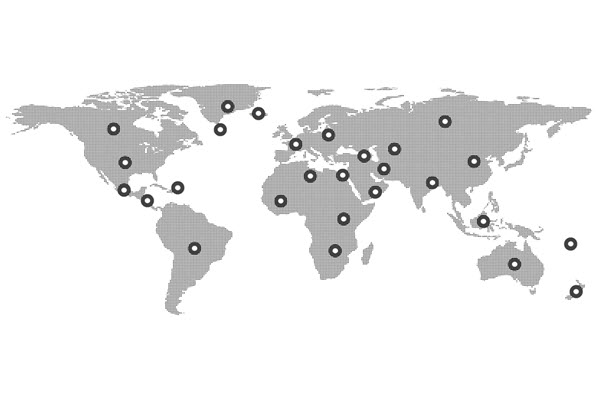What are Kidnap Prevention Security Operations
On January 10, 2003, Eddie Lampert, the Sears CEO at the time, was seized by four young men in his Connecticut office garage and held over a long weekend. After negotiating and agreeing to pay a $5 million ransom, Lampert was somehow able to convince his captors to set him free after promising to send them the money. He then went to a nearby police station to file a report, and the criminals were arrested shortly after.
However, not all kidnap-for-ransom stories have a happy ending, like in Lampert’s case. On the morning of April 29, 1992, top Exxon International executive Sidney Reso was driving to his mailbox to grab his newspaper like he did every morning. However, on this particular day, he was ambushed by a husband and wife criminal team and bundled into a waiting van.
When he tried to resist, they shot him in the arm. The kidnappers then proceeded to tie him up before leaving him gagged in a box located inside a self-storage facility, where he died four days later. They had initially demanded $18.5 million in ransom money but never showed up to pick up the cash.
These are just two examples of why executive protection services have become a must-have for both high-profile individuals and Ultra High Net-Worth Individuals (UHNWI). Here’s everything you need to know about kidnap prevention operations.
Types of Kidnapping
Kidnapping methods have evolved beyond the traditional “snatch and demand” technique. Kidnappers would take custody of the victim, hold them hostage, and proceed to demand a ransom from their employer or family members in exchange for their release.
Although the method is still largely in use today, the kidnapping techniques adopted by kidnappers vary depending on their motivation. Below are examples of other forms of kidnapping commonly seen in different parts of the world.
Proxy Bombings / Tiger Kidnapping
Unlike kidnapping for ransom, the criminals coerce the hostage or, in some instances, their close associates into performing a specific action for them. It could range from unlocking the office after hours so that the kidnappers can gain access into the office, opening the vault of the bank where the victim works, stealing money and other valuables, or even planting and/or detonating a bomb.
Express Kidnapping
This is typically a short-term ordeal where the criminal threatens the victim, takes them to an ATM, and forces them to withdraw the maximum allowed amount before setting them free. Occasionally, they may hold the victim until past midnight for them to withdraw a second day’s worth of cash before releasing them.
Political / Ideological Kidnapping
This is arguably the most dangerous form of kidnapping due to the wide range of groups and motives involved. Criminals target victims based on the political or ideological impact they have.
For instance, it could be to negotiate the withdrawal of security forces from an area or swap them for prisoners they want to be released. Ultimately, the fate of the hostage rests on the ability of the negotiators, mediators, and the hostage’s government to reach an amicable agreement.
This form of kidnapping is common in regions where insurgents hostile to the victim’s government have influence. Examples include some regions in the Middle East, East and Central Asia, and parts of Latin America.
Virtual Kidnapping
This type of crime is different from the rest in that it doesn’t involve taking physical custody of the victim. Instead, it has all the makings of a scam. Here’s how it works.
The criminal calls the target’s family members, employer, or close associates, claiming to have the target in their custody. They may even have an accomplice pretending to be the hostage crying for help in the background.
The criminals then demand a “reasonable” amount of money in exchange for the victim’s release once they confirm receipt. They keep the amount small to increase the chances of getting a quick payout.
Virtual kidnappers often gather information on the target through covert surveillance or social media. They tend to target individuals who are usually away for long periods working, studying, or traveling abroad.
Ways to Prevent Kidnapping
There are several preventative measures companies can take to reduce the kidnapping risk of their executives. Here are the top ones.
Establish a Solid Counter Surveillance Program
While kidnappings may look random, they are anything but. They are always preceded by a planning stage.
A counter-surveillance program may involve a covert team that conducts regular surveillance of the business premises, residence, or any other location, to keep tabs on any individual watching the target. That way, security operatives have a better shot at detecting, intervening, and neutralizing a threat before it materializes.
Install a GPS Tracker
Companies need to make use of technology that’s capable of transmitting and receiving GPS signals from emergency transmitters or cell phones. Even if the device is taken from the victim, it will still go a long way in helping security agencies track down the victims.
This is especially important for executives working in regions that have reported a high kidnapping risk for foreigners. The US State Department introduced a K risk indicator to allow individuals to assess the kidnapping risk by country, to take the necessary precautions when traveling to those regions.
Train Employees
As pointed out before, kidnappings are not random. They are usually planned. What kidnappers often fail to take into account is any drastic action taken by the victim to thwart the abduction attempt.
For instance, when a kidnap occurs, the criminals often threaten the victims to force them into a nearby car. Terrifying as this may be, it is more beneficial to train employees on how to escape a kidnapping attempt while it is happening than to show them how to escape once they’re incarcerated.
Consider Families Too
Potential threats and vulnerabilities don’t stop at the executives. Their families are prime targets as well. Get kidnapping prevention devices for kids like silicone wristbands with a panic button to communicate in emergencies.
You can also get them pull-pin alarms that can set off a 130dB siren, which can be heard up to 1,000 feet away. It also helps to train the household staff on basic counter-surveillance skills.
Better Safe Than Sorry
While assessing an organization’s risk for a potential executive kidnapping involves many moving parts, several preventative measures can be taken to minimize the risk. One foolproof way would be to retain a private security firm that offers highly-specialized executive kidnap prevention services.
If you have any questions about the kidnapping threat in your organization, get in touch with a Hyperion Security Advisor and request a free consultation.



Leave a Reply
You must be logged in to post a comment.